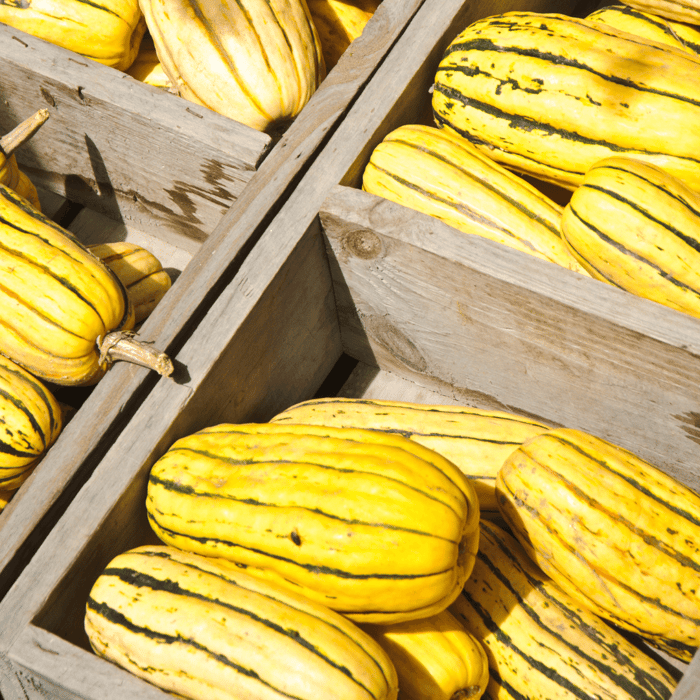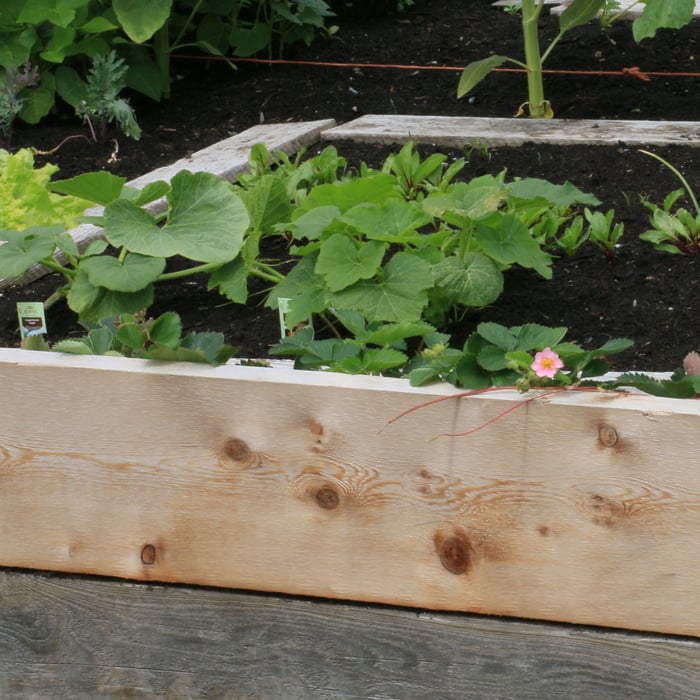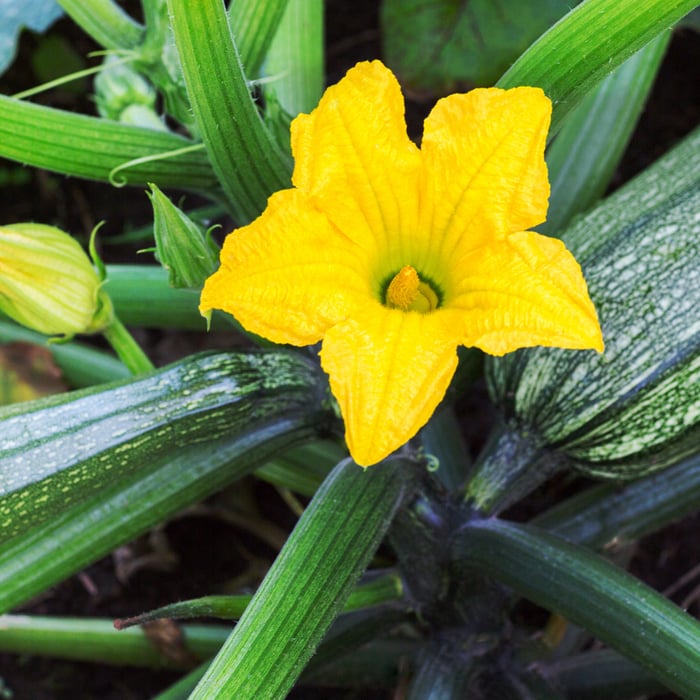Delicata squash (Cucurbita pepo), also known as sweet dumplings, sweet potato squash, or Bohemian squash, is a variety of winter squash prized for its delicious, sweet, and tender flesh. In this step-by-step guide, you'll learn how to grow delicata squash from seed and enjoy a bountiful harvest. With attractive cream-colored skin, green stripes, and a bush variety growth habit, this delightful squash is perfect for any home garden.
Table of Contents
- Delicata Squash: An Overview
- Plant Characteristics
- Preparing the Soil
- Planting Delicata Squash Seeds
- Caring for Delicata Squash Plants
- Pest and Disease Management
- Harvesting Delicata Squash
- Storing and Enjoying Your Harvest
Delicata Squash: An Overview
Delicata squash is a member of the Cucurbitaceae family, which also includes other popular varieties like summer squash, cucumbers, and melons. Known for its sweet taste and tender texture, delicata squash is an excellent addition to any garden. Its bush variety growth habit makes it a great choice for gardeners with limited space.
Plant Characteristics
- Native to: Central and South America
- Family: Cucurbitaceae
- Genus: Cucurbita
- Common name: Delicata squash, sweet dumpling, sweet potato squash
- History of the Seed: Delicata squash was introduced to the United States in the early 20th century.
- Days till maturity: 80-100 days
- Planting depth: 1 inch deep
- Plant spacing: 24-36 inches apart
- Days to germination: 7-14 days
- Start indoors or direct sown: Either, but direct sowing is preferred.
- Full sun or partial shade: Full sun
- When to harvest: Harvest when the skin is hard and the stem is dry.
- How tall does the plant get: 2-3 feet tall
- How wide does the plant get: Up to 20 square feet
Preparing the Soil
Before planting your delicata squash seeds, it's essential to prepare the soil properly. This variety thrives in well-draining soil with a pH of 6.0 to 6.8. Follow these steps to ensure optimal soil conditions:
- Choose a sunny location that receives at least six hours of direct sunlight each day.
- Loosen the soil to a depth of 12-15 inches using a garden fork or tiller.
- Amend the soil with rich compost or well-rotted manure to improve its nutrient content and drainage.
- Test the soil pH using a pH testing kit and adjust it accordingly, if necessary.
Planting Delicata Squash Seeds
Once your soil is prepared, you're ready to plant your delicata squash seeds. Follow these steps for successful planting:
- Wait until after the last frost date in your area to plant your seeds. Delicata squash is sensitive to frost and cold temperatures.
- Sow the seeds about 1 inch deep, spaced 24-36 inches apart. If planting in rows, space the rows 4-6 feet apart to allow room for the bush variety growth habit.
- If you prefer to start your seeds indoors, sow them in biodegradable pots 3-4 weeks before the last frost date. This will allow for easier transplanting and minimal root disturbance.
- Water the seeds thoroughly after planting and keep the soil consistently moist until the seedlings emerge, which typically takes 7-14 days.
Caring for Delicata Squash Plants
Proper care is crucial to ensure a bountiful harvest of delicata squash. Follow these guidelines to help your plants thrive:
- Watering: Water your delicata squash plants regularly, providing approximately 1 inch of water per week. Aim to keep the soil consistently moist but not waterlogged. Using a soaker hose or drip irrigation system can help maintain consistent moisture levels while reducing the risk of powdery mildew and other diseases.
- Fertilizing: Apply a balanced, all-purpose fertilizer when the plants are about 1 foot tall and again when the first blossoms appear. Avoid high-nitrogen fertilizers, as they can encourage excessive foliage growth at the expense of fruit production.
- Mulching: Apply a layer of organic mulch, such as straw or shredded leaves, around the base of your plants to help retain soil moisture, suppress weeds, and regulate soil temperature.
- Pruning: Although not required, pruning can help increase airflow around your plants and reduce the risk of diseases like powdery mildew. Remove any dead or diseased leaves and any leaves touching the ground.
Pest and Disease Management
Delicata squash plants are susceptible to several pests and diseases. Here are some common issues and their management strategies:
- Cucumber beetles: These pests can damage the leaves and transmit bacterial wilt. Use floating row covers to protect young plants and remove beetles by hand or with a vacuum cleaner. Neem oil can also be effective in controlling cucumber beetles.
- Powdery mildew: This fungal disease appears as a white, powdery substance on the leaves. Increase airflow around plants by proper spacing and pruning. Apply neem oil or sulfur-based fungicides to control powdery mildew.
- Bacterial wilt: Caused by cucumber beetles, this disease results in wilting and eventual death of the plant. Prevent and control cucumber beetles to minimize the risk of bacterial wilt.
Harvesting Delicata Squash
Delicata squash is ready for harvest when the skin is hard and the stem is dry. Follow these steps for successful harvesting:
- Use a sharp pair of pruning shears or a knife to cut the squash from the vine, leaving about 1-2 inches of stem attached.
- Harvest before the first hard frost, as frost can damage the fruits and reduce their storage life.
Storing and Enjoying Your Harvest
Once you've harvested your delicata squash, follow these steps to store and enjoy them:
- Cure the squash by leaving them in a warm, well-ventilated area for 7-10 days. This will help to harden the skin and improve its storage life.
- Store the cured squash in a cool, dark, and well-ventilated area, such as a basement or pantry. Ideal storage temperatures are between 50-55°F.
- Enjoy your delicata squash in a variety of delicious recipes, such as roasted with herbs and spices, stuffed with grains and vegetables, or puréed into soups and sauces.
Growing delicata squash from seed can be a rewarding and delicious endeavor for any gardener. By following this step-by-step guide, you'll be well on your way to enjoying a bountiful harvest of these tasty, versatile squash. From preparing the soil and planting seeds to managing pests and diseases, proper care is key to ensuring the success of your delicata squash plants. And when it's time to harvest, store, and savor your homegrown delicata squash, you'll be glad you took the time and effort to cultivate this delightful variety of winter squash in your garden.
Tips for Growing Delicata Squash Successfully
Here are some additional tips for growing delicata squash successfully:
- Companion Planting: Planting herbs like basil, mint, or oregano near delicata squash can help repel pests and attract beneficial insects like bees and butterflies.
- Crop Rotation: To prevent soil-borne diseases, avoid planting delicata squash in the same spot or area where other squash or cucurbits were grown in the previous year.
- Trellising: For small garden spaces or to save room, delicata squash can be grown on a trellis or fence. Keeping the foliage off the ground can also help prevent diseases and pests.
- Seed Saving: To save delicata squash seeds for future planting, allow the fruit to fully ripen and then scoop out the seeds. Rinse the seeds in water and dry them thoroughly before storing them n a cool, dry place.
- For a fuller article on how to grow squash from seeds, click here.
Conclusion
Growing delicata squash is a rewarding experience for home gardeners. With the right location, soil, and care, you can enjoy a bountiful harvest of this delicious and nutritious winter squash. Following the tips outlined in this article, you can successfully grow and harvest delicata squash in your backyard. Now that you know how to grow delicata squash, are you going to? It's not a squash that I have been able to find in the stores very often.
Frequently Asked Questions - How to Grow Delicata Squash
Q: When is the best time to plant delicata squash seeds?
A: Delicata squash is a warm-season crop that requires full sun and a long growing season. Wait until the danger of frost has passed and the soil has warmed to at least 60°F (15°C) before planting delicata squash seeds.
Q: How often should I water delicata squash plants?
A: Delicata squash plants require consistent moisture to thrive. Water them deeply once a week or more frequently during hot, dry weather. Be sure to water at the base of the plant and avoid getting water on the leaves, as this can promote fungal diseases.
Q: How can I tell when delicata squash is ready to harvest?
A: Delicata squash is ready to harvest when the skin turns a deep orange color and feels hard to the touch. Use a sharp knife or pruner to cut the fruit from the vine, leaving a short stem attached. Be sure to harvest delicata squash before the first frost, as cold temperatures can damage the fruit.
Q: Can I grow delicata squash in a container?
A: Delicata squash plants require a lot of space to grow and produce fruit, so they are not the best choice for container gardening. However, if you have a large container or planter, you can grow delicata squash on a trellis or support system to save space.
Q: How do I prevent pests and diseases affecting delicata squash plants?
A: It is essential to practice good garden hygiene and organic pest control methods to prevent pests like cucumber beetles and diseases like powdery mildew and bacterial wilt. Keep the garden area clean and debris-free, rotate crops, and use row covers or netting to protect plants from pests. To control pests, use natural pest control methods, like neem oil or insecticidal soap. For fungal diseases like powdery mildew, use a fungicide or preventative measures like keeping the leaves dry and providing good air circulation.
Q: Can I save delicata squash seeds for next year's planting?
A: Yes, you can save delicata squash seeds for future planting. Allow the fruit to ripen on the vine, then scoop out the seeds. Rinse the seeds in water and dry them thoroughly before storing them in a cool, dry place.
Q: How long can delicata squash be stored after harvest?
A: Delicata squash can be stored in a cool, dry place, such as a pantry or cellar, for several months. Be sure to clean the skin with a damp cloth and allow it to dry completely before storing it. Do not wash the fruit before storing it, promoting mold growth.
Q: What are some standard recipes or dishes that use delicata squash?
A: Delicata squash is a versatile ingredient in various recipes and dishes. Some popular ways to use delicata squash include roasting, grilling, sautéing, and using it in soups or stews. It pairs well with fall flavors like sage, thyme, and cinnamon. Here are a few recipe ideas:
- Roasted Delicata Squash: Slice delicata squash into rings or wedges, toss with olive oil, salt, and pepper, and roast in the oven at 400°F (205°C) for 20-25 minutes, flipping halfway through.
- Delicata Squash Soup: Sauté onions, garlic, and diced delicata squash in a pot until tender, then add broth and simmer until everything is cooked through. Use an immersion blender or transfer to a blender to puree until smooth. Serve with a dollop of sour cream or yogurt.
- Delicata Squash Salad: Slice delicata squash into thin rounds and toss with mixed greens, crumbled feta cheese, toasted pumpkin seeds, and a lemon vinaigrette dressing.
Q: What other varieties of winter squash can I grow?
A: Winter squash is a large family of hard-shelled squash varieties that can be stored for several months after harvest. Some popular winter squash varieties include:
- Acorn Squash: A small, ribbed squash with green or orange skin and sweet, nutty flavor.
- Butternut Squash: A bell-shaped squash with tan skin and a sweet, nutty flavor that is great for roasting or pureeing.
- Spaghetti Squash: A oblong squash with yellow skin and stringy flesh that can be cooked and scraped into spaghetti-like strands.
- Kabocha Squash: A Japanese variety of winter squash with a sweet, nutty flavor and a dense, dry texture.
- Hubbard Squash: A large, bumpy squash with a hard, thick skin and sweet, nutty flavor.
Q: What is the difference between summer squash and winter squash?
A: Summer squash and winter squash are two different categories of squash varieties. Summer squash, like zucchini and yellow squash, has thin, edible skin and a high water content, making them more perishable and best eaten fresh. Winter squash, like delicata squash, has complex, thick skin and dense flesh that can be stored for several months after harvest. Winter squash is also typically sweeter and nuttier in flavor than summer squash.







